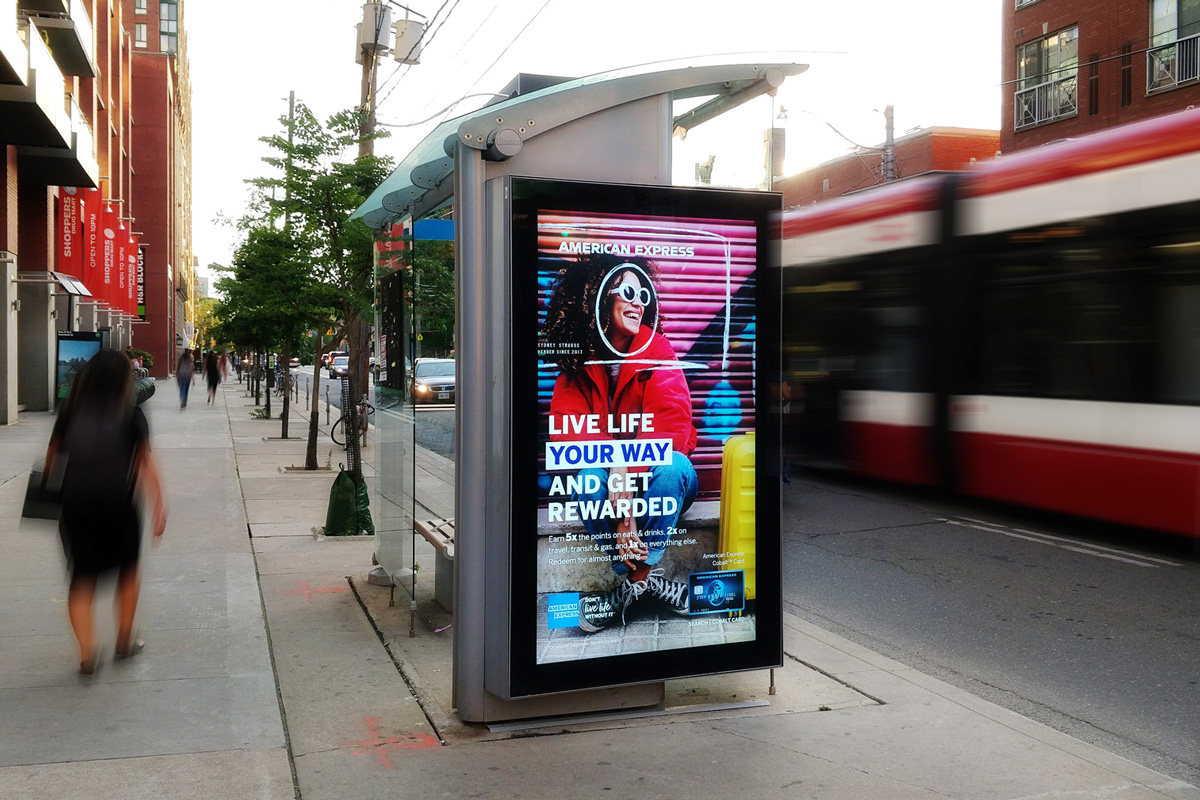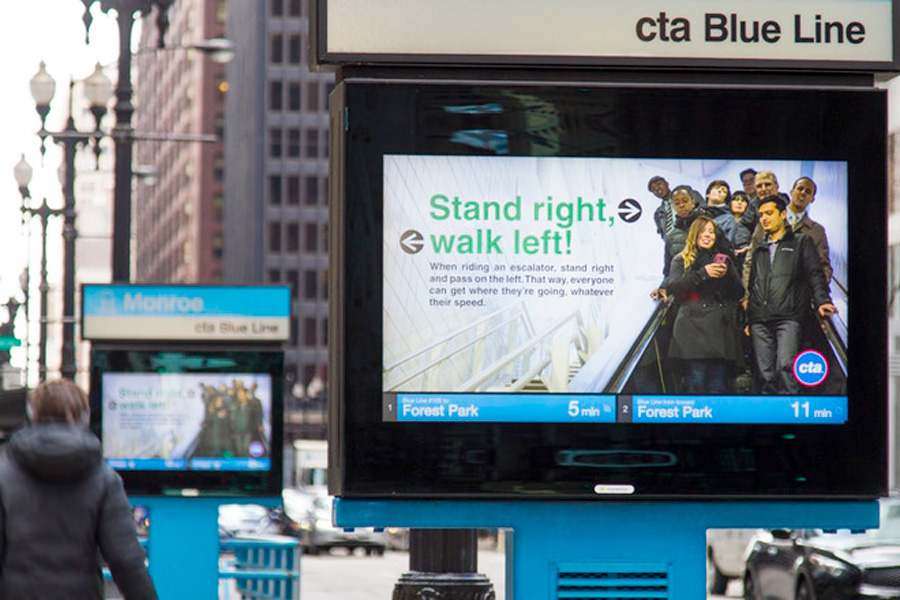Powering Digital Out of Home
Powering Digital Out of Home
Bus Shelters
Bus shelters were once boringly functional affairs, built solely by municipal governments as a public service. Then in 1969, two billboard advertising companies joined forces to form a company called Adshel and began supplying bus shelters to cities for nothing but the right to display advertising on them.
In the early 1980s, bus shelter ads got their big break when Adshel launched a campaign for a fictional product and promoted it solely through the bus shelters. Market research revealed an impressive awareness of this product among the general public, which proved they were definitely on to something with this street furniture thing.
In today’s world, bus shelters and advertising contracts work in much the same way they started out half a century ago. With contract terms extending out as far as 10 or 15 years, media companies turn to long-life BoldVu® displays that seamlessly integrate into their bus shelter structures.

Street Kiosks
The idea of digital, interactive kiosks placed on sidewalks, in parks, and around other public venues has found particular foothold among cities and venues striving to modernize infrastructure, streamline public services, and more effectively communicate with their citizens and visitors. Having found success by providing locally relevant information via news feeds, transit alerts, and wayfinding, next-generation street kiosks are poised to play a greater role in the development and delivery of IoT infrastructure built to provide civic benefit and commercial value for decades to come.
With the unique ability to house, power, and cool IoT devices inside its thermally controlled and environmentally sealed electronics chassis, BoldVu® displays simplify and streamline the deployment of critical connectivity and edge compute resources in public spaces.

Urban Panels
The Urban Panel located on the top of subway entrance railings has long been a staple in the commuter advertising space as they offer large volumes of hyper-local, high quality impressions. Out of home media companies have taken the digital urban panel to other cities with heavy rail systems including Chicago and Boston, as both a way to further monetize the real-estate and to offer critical public messaging capabilities.
Because of their durability, performance, and longevity, BoldVu® displays are the backbone for most of the digital urban panel networks across the US today.
Transit Screens
Transit screens in rail stations serve as Passenger Information Displays (PIDs) in direct line of sight of commuters, including those waiting for departure information where dwell time is the highest. Transit screen networks provide up-to-the-minute arrival and departure information, service alerts and emergency messaging funded by media advertising.
Because of their unsurpassed performance in harsh environments, BoldVu® displays have been deployed in hundreds of rail stations across the US and around the world.
Emerging Media
As more and more traditional OOH inventory is converted to digital, new properties are beginning to join the mix. Beyond bus shelters, street kiosks, urban panels, and transit screens, we’re seeing the development of digital taxi tops, news stands, phone booths, vehicle charging stations, light poles, and more. Every newly converted medium brings fresh eyes and new targeting opportunities.
MRI continues to develop display technology to drive DOOH forward with applications for new and emerging properties.

